Search Results
Fine Jewelry University Articles matching: “Ci925 curve green jem ring”
Showing only FJU Article results. Click here to show all results.
Fine Jewelry University (Show All FJU Articles)
-
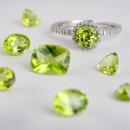
Gem in the Spotlight: Peridot
Peridot is a lovely yellow-green gem with a rich history. Legend has it that Peridot was the favorite gemstone of Cleopatra. The ancients called it … for August. It is also the accepted anniversary gemstone for the 16th year of marriage. Peridot’s unique yellow-green color is very attractive. The name “Peridot” is simply a French word derived from the Arabic for green. Peridot’s color … soft appearance. Color is the most important characteristic when determining the value of a Peridot gem. The deeper green the peridot is, the higher its value. There is a lot of confusion over the pronunciation of peridot. It is actually …
-
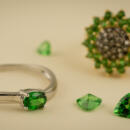
Gem in the Spotlight: Tsavorite Garnet
…, all with the time tested durability of garnet. Tsavorite is a unique form of garnet with a stunningly vivid green color. It is bright and lively with a high refractive index giving it excellent sparkle and scintillation. Tsavorite is …, Tsavorite is around 200 times rarer than the much better known Emerald. Gemology Tsavorite’s rarity and beautiful green color reminds one of the other green garnet called Demantoid. Demantoid, however, is a completely different variety …
-
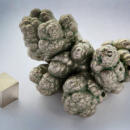
What to Do When Your Ring Irritates Your Skin
… can begin hours or even days after contact and may last for several weeks. Some people’s skin even turns black or green when they wear certain jewelry. One of the most common metal allergies is Nickel which is added to pure gold in many … necessarily allergies. For example, copper or metals that contain copper (like bronze) can cause the skin to turn green where the metal comes in contact with it. This isn’t an allergic reaction but a simple discoloration on top of the …
-
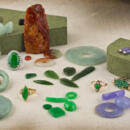
Gem in the Spotlight: Jade
… toughness, can be carved, and can be taken to a high polish. Nephrite is commonly found in a darker olive green color but can also be very light green, orangey-red, black, and yellowish green. Jadeite can come in many different colors … pink, purple (often called lavender jade), blue, black, white, and the most valuable/desirable color: a vibrant green. The finest of all green jadeite colors is a saturated emerald green that is almost transparent, and it is called “…
-
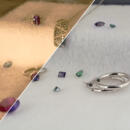
Gem in the Spotlight: Alexandrite
… Alexandrite is the extremely rare, color-change variety of a gem species called Chrysoberyl. It appears bluish-green in daylight, fluorescent light, and some LED light. Under incandescent light, candle, and firelight, alexandrite appears … interacts with alexandrite’s crystal structure. It absorbs most wavelengths of light very well, only transmitting green and red light. This means that depending on the light source the stone will reflect more of the accent colors of light…
-
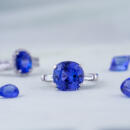
Gem in the Spotlight: Tanzanite
… different colors when viewed at different angles. Tanzanite in its raw form has three colors: blue, purple, and green. Heating removes the green component which makes the violetish blue color pop (although technically speaking it doesn’t …present. Raw, unheated tanzanite is sometimes marketed as “mermaid tanzanite” because of the iridescent blue and green colors. You can usually tell if a tanzanite has been heated by using a dichroscope. This is a tool that gemologists use …
-
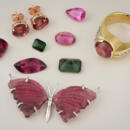
Gem in the Spotlight: Tourmaline
…: is red, pinkish red, orangy red, or pink tourmaline. Indicolite: is dark blue, dark violetish blue, or dark greenish blue tourmaline. Paraíba: is a copper colored blue, intense violetish blue, or greenish blue tourmaline from Paraíba, …chrome tourmaline’s color actually comes from vanadium. Watermelon: This variant of tourmaline has a pink center and green edges that resembles a watermelon. Crystals of this type are often cut in slices to display this unique property. …
-
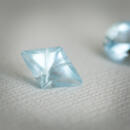
Gem in the Spotlight: Aquamarine
…very pale blue to a deep blue, the finest specimens being the deepest in color. Most aquamarine stones have a subtle green component, and in some markets, a deep greenish blue is the most desirable. Brazil is the most prolific supplier of … See More Aquamarine » Aquamarine is more than March’s birthstone. Its beauty is in its purity of color. The blue green hue is not overpowering but an understated appeal. It has an elegance and subtlety that is lost with more vibrant …
-
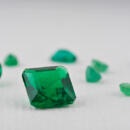
Gem in the Spotlight: Emerald
… are a member of the beryl mineral family (along with morganite and aquamarine) and are valued for their rich green color. The intensity of an emerald’s hue depends on the presence of chromium and vanadium in the crystal structure. Emerald… a symbol of the reproductive forces of nature. Modern science has shown us that the human eye is more sensitive to green than to any other color thereby making it easier on the eyes. Pliny said that emeralds were the only gemstones that …